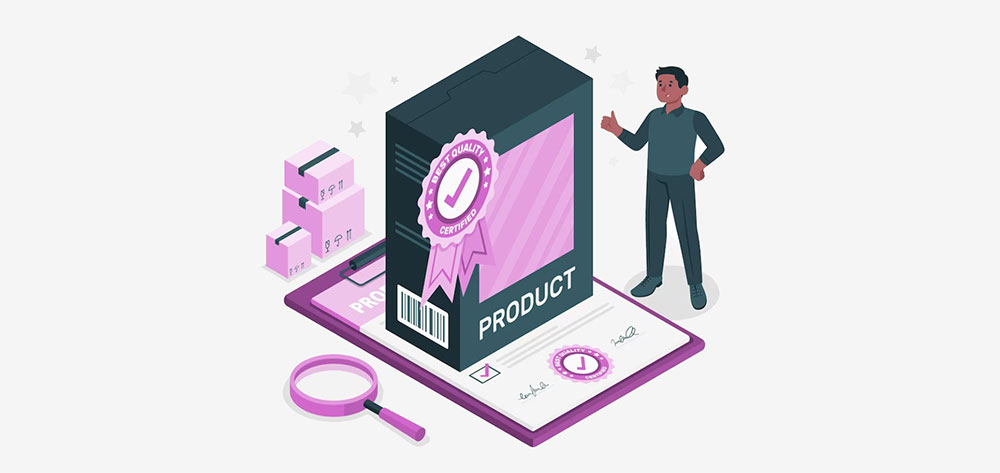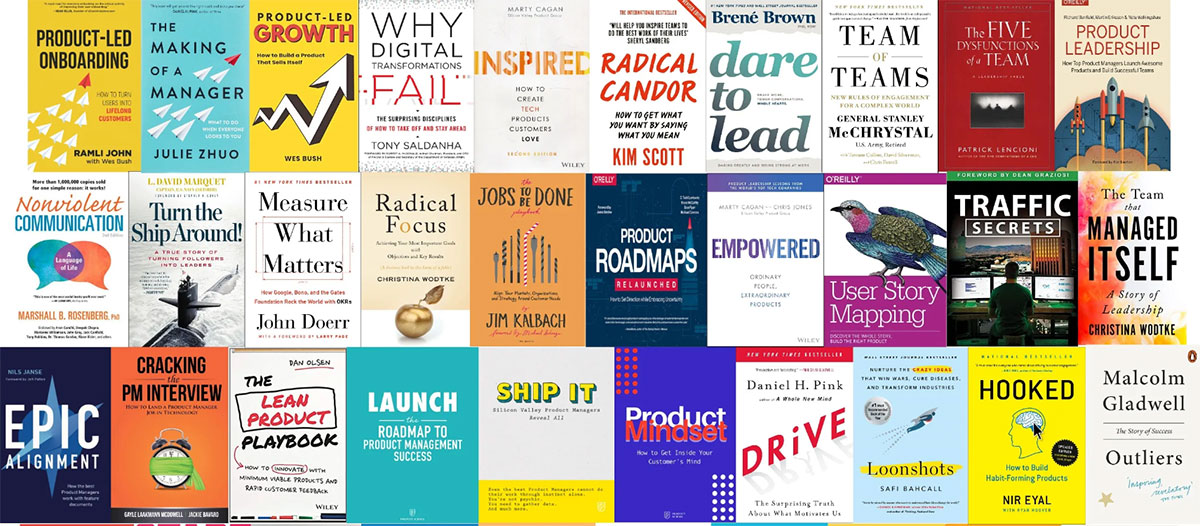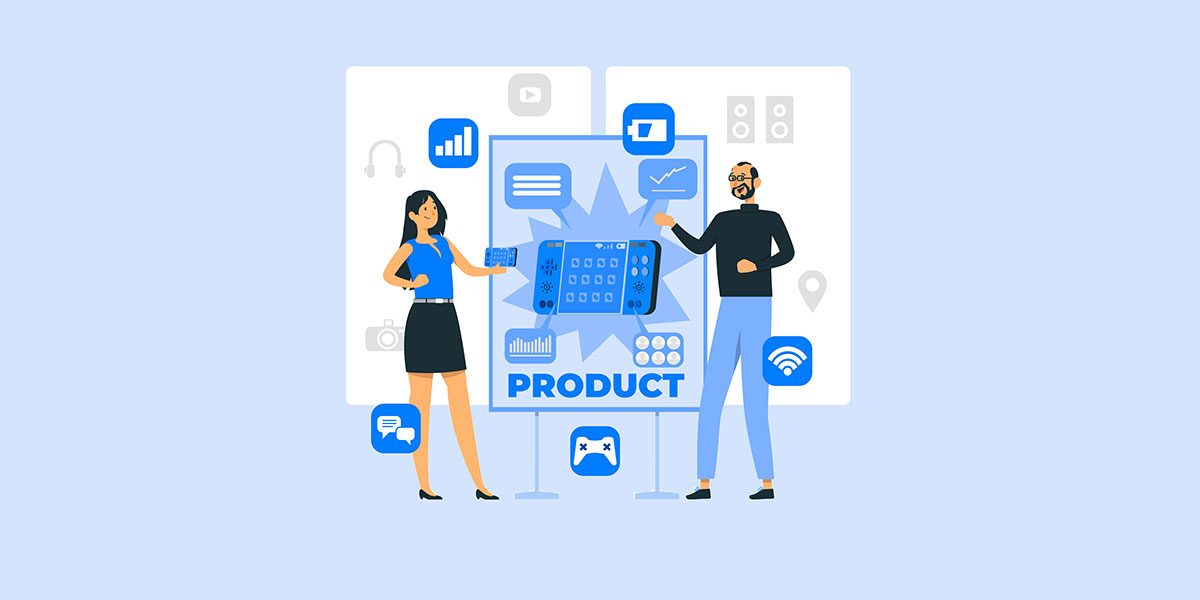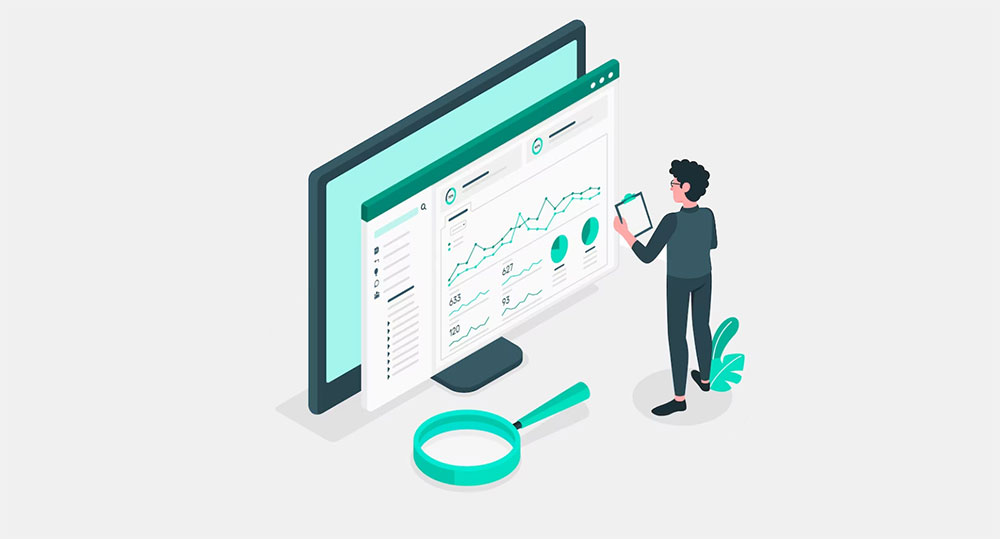Driving Revenue with Product-Led Sales: Strategies for Success

Imagine digging into a toolbox, but instead of a hammer and nails, you’re armed with insights and data. That’s the essence of product-led sales, a powerhouse strategy shaking up the traditional sales landscape.
Dive into a realm where products don’t just speak; they captivate, nurture, and convert with a finesse that’s rewriting the playbook on user engagement and growth.
This method isn’t merely about showing off snazzy features; it’s a saga of user onboarding, unparalleled customer experience, and the subtle art of persuading users that the value they seek is inherently woven into the product they use.
If the proof is in the pudding, this strategy guarantees a taste that lingers, ensuring customer retention and fostering a relationship where the product isn’t just a tool – it’s the hero of the story.
By delving deep into this article, you’ll harvest actionable strategies connecting digital marketing, agile product development, and customer success management into a seamless fabric.
Unravel the power of product analytics and delve into tactics for transforming freemium models into revenue-generating machines, enhancing your go-to-market swagger.
Unpack a blueprint where each paragraph is a stepping stone towards mastering product-led sales – a beacon guiding the way in this user-centric era.
Key takeaways
- Freemium and Free Trials: Offering free trials or a freemium model is essential in a product-led sales strategy as it allows potential customers to experience the value of the product firsthand, which is crucial for conversion.
- Product-Qualified Leads (PQLs): PQLs are leads who have demonstrated a clear understanding and value of the product through its use. They have essentially pre-qualified themselves, making them more likely to convert to paying customers.
- Enhanced Buyer Experience: Product-led sales enhance the buyer experience by allowing potential customers to try the product before making a purchase commitment, leading to higher satisfaction and fewer returns.
- Expansion Opportunities: After customers have had a positive experience with the product, they are more likely to remain loyal, providing opportunities for upselling, cross-selling, and market expansion.
The Evolution of Sales
Traditional Sales vs. Product-Led Sales

Okay, let’s take a quick trip down memory lane and talk about how sales have evolved over time.
Remember the old days of door-to-door salespeople? They would show up at your door, product in hand, and try to convince you to buy it based on their persuasive selling skills.
Fast forward to today, and things are quite different. Instead of the salesperson, it’s the product that’s doing most of the talking. In fact, in many cases, it’s the product that draws the customer in, not a sales pitch.
That’s the basic difference between traditional sales and product-led sales.
In traditional sales, the salesperson is the star of the show. They’re responsible for generating leads, nurturing them, and closing the deal. It’s all about building relationships and convincing prospects of the value of the product.
On the other hand, product-led sales shifts the focus from the salesperson to the product. It’s about creating a product so good, so useful, that it attracts customers on its own. The product itself becomes the primary driver of customer acquisition, conversion, and expansion.
The Shift from Sales-Led to Product-Led Strategies
But why this shift? Why move from a sales-led strategy to a product-led one?
Well, the answer lies in the way customers buy products today. Customers are more informed and discerning than ever before. They have a world of information at their fingertips and they’re not afraid to use it.
They’re less likely to be swayed by a flashy sales pitch and more likely to be impressed by a product that delivers real value.
Also, the rise of digital products and SaaS companies has made it easier for customers to try products before they buy, shifting the dynamics of the sales process.
That’s why more and more companies are turning to product-led sales strategies. By putting the product front and center, they’re able to attract and retain customers in a way that’s more aligned with modern buying behaviors.
Understanding the Product-Led Sales Model

In a product-led sales model, the product isn’t just something you sell; it becomes an integral part of the sales process. It’s not just about having a great product, but about using that product as a way to draw in and convert potential customers.
Imagine having a product that’s so good, so useful, that people come flocking to it, all without you needing to make a single sales call. That’s the power of a product-led sales model. Your product stands out in the crowd and sells itself.
But remember, it’s not just about having a stellar product. It’s also about how you present and deliver that product to your potential customers. Which brings us to the next point.
The Concept of Product-Led Growth
When we talk about product-led sales, we also have to talk about product-led growth. That’s because they go hand in hand.
Product-led growth is a go-to-market strategy that relies on product usage as the primary driver of user acquisition, retention, and expansion. Simply put, it’s about using your product as a growth engine.
This means making your product so compelling, so helpful, that users can’t help but sign up, stick around, and even spread the word.
The Impact of Product-Led Sales on the Sales Funnel
In a traditional sales funnel, the product typically comes into play towards the end, after leads have been nurtured and are almost ready to buy.
In a product-led sales funnel, the product is introduced much earlier in the process. Prospects get to experience the product, see its value, and understand how it can solve their problems, all before they make a buying decision.
This can have a massive impact on the sales funnel. It can attract more prospects, convert them at higher rates, and even turn them into loyal customers who stick around for the long haul.
But how exactly does this work? What does a product-led sales funnel look like? And how can free trials and user experience play a role in this?
The Mechanics of Product-Led Sales
The Product-Led Funnel
Imagine a funnel, okay? Now, instead of pushing leads from the top and trying to persuade them to drop out as customers at the bottom, flip the funnel upside down. We’re not pushing anything. We’re attracting leads with the power of our product.
This is the magic of a product-led sales funnel.
The focus here isn’t on outbound sales efforts like cold calling or shooting off emails. Instead, we’re attracting potential customers with a killer product that answers their needs and wants. They get to try the product first, witness its greatness, and then make the decision to buy.
And the beauty of this model? It often leads to higher conversion rates and more satisfied customers. Who wouldn’t want that?
The Role of Free Trials and User Experience
Let’s chat about free trials and user experience. They’re like two peas in a product-led sales pod.
Offering free trials or a freemium model allows potential customers to experience the product first-hand. They can see if it fits their needs and if they like using it. It’s like trying on a pair of shoes before buying them.
And user experience? It’s crucial. A product with a stellar user experience is more likely to retain users after the free trial. They will love using the product and will want to continue using it.
So, designing an intuitive, enjoyable product is a must in a product-led strategy.
The Concept of Product-Qualified Leads (PQLs)
Alright, you’ve heard of marketing-qualified leads and sales-qualified leads. But what about product-qualified leads? Welcome to another integral part of product-led sales.
A PQL is a lead that’s demonstrated clear product value through usage. They’ve tried the product, found it useful, and are more likely to convert. They’ve essentially pre-qualified themselves.
Prioritizing PQLs Using Tiers
Now, not all PQLs are created equal. Some are hot, ready to buy. Others, not so much. That’s where tiering comes into play.
You can segment PQLs based on product usage, behavior, and other factors. This helps prioritize who the sales team should focus on first.
The Benefits of Product-Led Sales
Reach and Monetization of the Entire Market
With product-led sales, you’re no longer restricted to leads your sales team can reach. Your product can reach the entire market! Anyone anywhere can try it, like it, and decide to buy it.
And monetization? It’s not just about that initial sale. A great product can encourage upselling and cross-selling, leading to increased customer lifetime value.
Improvement of Buyer Experience
We all love a good shopping experience, right? That’s another area where product-led sales shines.
Buyers get to try the product before committing, ensuring it’s a good fit. This leads to happier customers and fewer returns or unhappy experiences down the road.
Driving Sales Efficiency
With the product doing most of the heavy lifting, sales teams can focus on the most promising leads – those who have tried the product and shown interest. This can make sales efforts more efficient and effective.
Increasing Expansion Opportunities
Once customers fall in love with your product, they’re likely to stick around and explore what else you have to offer. This can lead to upselling, cross-selling, and expansion into new markets.
The Role of Product Data in Product-Led Sales
The Importance of Actionable Product Insights
So, we’ve got a stellar product that’s attracting leads like a magnet. Now what? We dig into the data.
Understanding how users interact with your product can offer invaluable insights. It can show what’s working, what’s not, and where there’s room for improvement.
Data can guide product development, marketing strategies, and sales efforts. It’s like a goldmine of information that can help optimize your product and grow your business.
The Use of CRM and Product Insights in Sales Workflows
CRM systems and product data together? It’s a match made in heaven for product-led sales.
Integrating product usage data into your CRM can provide a fuller picture of leads. It can show who’s using the product, how they’re using it, and how likely they are to convert.
This can help the sales team prioritize leads and tailor their approach based on product usage.
And that, my friend, is the beauty of product-led sales. It’s not just about creating a great product; it’s about using that product as a key driver of sales and growth.
The Impact of Product-Led Sales on Sales Teams
The Changing Role of Sales Teams in a Product-Led Model
Let’s picture a sales team for a moment. The old-school image is probably something like a group of people, phones in hand, hustling and bustling to make the next sale. But with product-led sales, that picture is getting a makeover.
Sales teams are no longer just about making calls and closing deals. They’re becoming more like consultants or product experts, helping potential customers understand and get the most out of the product.
This shift isn’t just a change in day-to-day tasks. It’s a change in mindset. Instead of pushing to sell, sales teams are there to help, guide, and support.
The Need for a Sales Makeover in a Product-Led Growth Strategy
The switch to a product-led strategy requires a bit of a makeover for the sales team. But it’s not just about teaching them about the product. It’s also about empowering them with data and tools to make the most of the product-led approach.
Sales teams in a product-led model need to understand the ins and outs of the product. They also need to understand the data – who’s using the product, how they’re using it, and what that means for potential sales.
By equipping sales teams with product knowledge and data, companies can ensure they’re ready to excel in a product-led model.
FAQ On Product-Led Sales
What exactly is product-led sales?
It’s a cool shift in strategy. You’re flipping the standard sales process on its head. Basically, the product is the star of the show—it does most of the heavy lifting by drawing in users through free trials or freemium models, then hooks them by delivering value upfront.
How do you convert free users to paying customers?
That’s the art and science of it. We optimize the user onboarding experience and ensure it’s so slick that users can’t help but see the customer lifetime value. Encouraging feature discovery and usage, we strategically nudge them towards that “aha” moment, which tips them into pulling out their wallets.
What role does user experience play in product-led sales?
User experience is the foundation, folks. I’m talking about creating a product so intuitive and engaging that it’s a no-brainer for the user to keep coming back. Every click, every swipe, is a step towards conversion rate optimization. It’s about marrying product design with customer success flawlessly.
How is success measured in product-led sales?
Success isn’t a one-and-done deal; it’s tracked through usage metrics and growth indicators. We pore over conversion metrics and keep an eye on churn rates. It’s critical to know how often and how deeply users engage with the product, as that hints at their perceived value.
How does content marketing fit into product-led sales?
Content marketing in the product-led world is about storytelling with a twist of value transmission. It’s the strategic deployment of educational and persuasive content that amplifies the product’s worth. Think in-app tutorials, blog posts, and case studies that gently guide users deeper into the product ecosystem.
Can product-led sales work for any type of product?
It’s particularly smashing for SaaS or any product where the customer experience can be digitized and delivered online. The key is a product that can showcase its value quickly and without heavy lifting from a sales team; otherwise, it’s a square peg, round hole situation.
What’s the relationship between product-led sales and traditional sales?
Think of them as cousins. Traditional sales rely on personal relationships and persuasion. In contrast, product-led sales let the product do the talking. It’s all about automated sales funnels and behavioral tracking now. Traditional sales tactics haven’t vanished; they’re just no longer the alpha play.
What challenges come with a product-led sales approach?
Ah, the roadblocks. User acquisition is just the start. The real deal is maintaining product engagement and optimizing the enter sales funnel. Some find it tough to balance user autonomy with strategic nudges towards conversion. And then there’s always the specter of increasing competition.
How do you ensure that a product can sell itself?
That’s the golden question. It boils down to capturing user attention with stellar UI/UX design, adding value at every interaction, and using insights from product analytics for data-driven product development. It’s like crafting a top-tier dish that’s irresistible from the first taste.
What future trends do you see for product-led sales?
Considering how everything’s becoming more user-centric, product-led growth (PLG) is here to stay, my friends. Expect a boost in artificial intelligence and predictive analytics for even smoother user experiences. Also, look out for a surge in personalized onboarding that feels tailor-made for each user.
Conclusion
So, we’ve navigated the waters of product-led sales, a journey where products aren’t just items on a shelf, but dynamic beacons guiding users to experience their value firsthand. No high-pressure sales pitches, just the product, front, and center, doing the legwork. This approach transforms users into advocates, and it’s reshaping the SaaS landscape like a pro.
- Customer experience? Reinvented.
- Growth hacking? Nailed it.
- Freemium models? Game-changers.
In the dance of conversion and retention, it’s the moves made by the product that lead to that sweet revenue groove. Companies that can marry sleek design with automated sales funnels and data-driven development will see their users stick around, laying down roots in this product-led terrain.
As the curtain falls on this act, remember: the product adoption cycle is the pulse of this sales philosophy. Tuning into that rhythm is what turns good products into great stories, and great stories into unstoppable sales forces.
If you liked this article about product-led sales, you should check out this article about product validation.
There are also similar articles discussing user adoption strategies, product monetization strategies, product branding, and product-led onboarding.
And let’s not forget about articles on product documentation, product iteration, PLG vs SLG, and product management with Monday.
- Top 7 Ways Outsourcing eCommerce Customer Service Can Increase Your Sales - May 5, 2024
- Animate with Ease: Top CSS Animation Libraries Today - May 5, 2024
- Golang’s Growing Use: What is Golang Used For? - May 5, 2024








